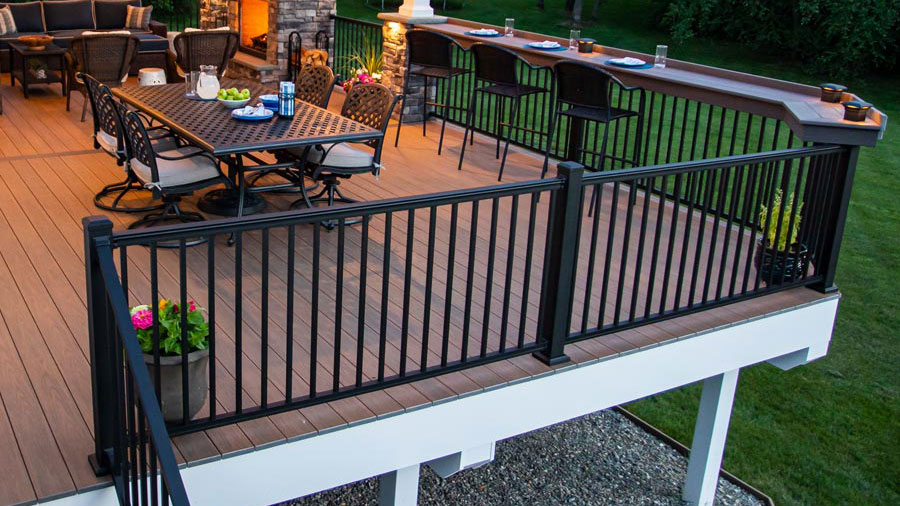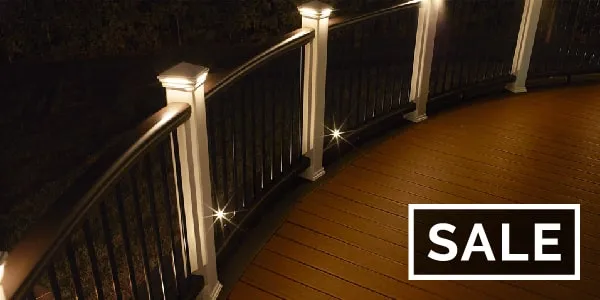Deck Railing Design Ideas To Help You Pick The Perfect Railing For Your Space
If you're looking to revamp your deck, there's one key question you should answer before doing any other planning:
Should your deck railing stand out or blend in?
It's not a question with a right answer. It's only a question with a right answer for you. Some homeowners want their deck railing to be a focal point, and accent piece, a stylistic star. Others want the railing to play a supporting role, emphasizing a spectacular deck view, beautiful landscaping, or a showstopping architectural home.
Read on for inspirational photos of decks with railings that either stand out or blend in, then find out what characteristics you should look for in a deck railing to get the style you want.
Stand Out…
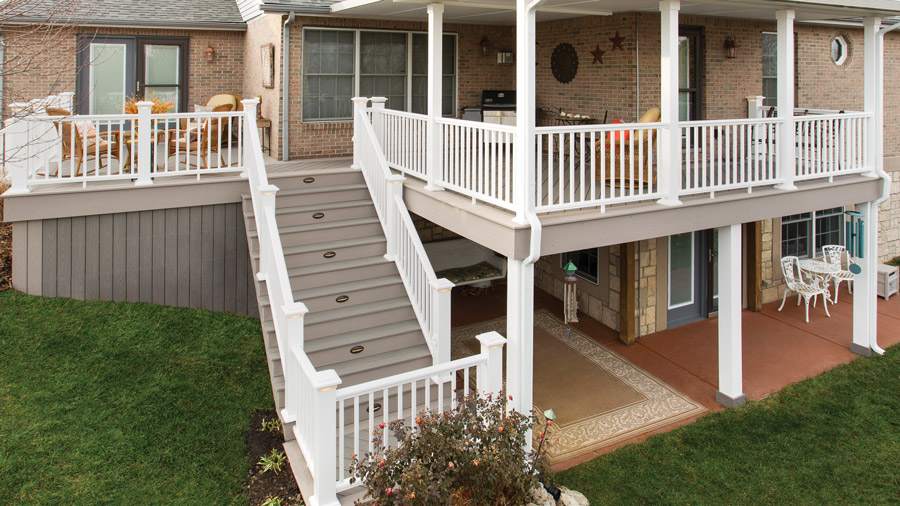
… or Blend In?
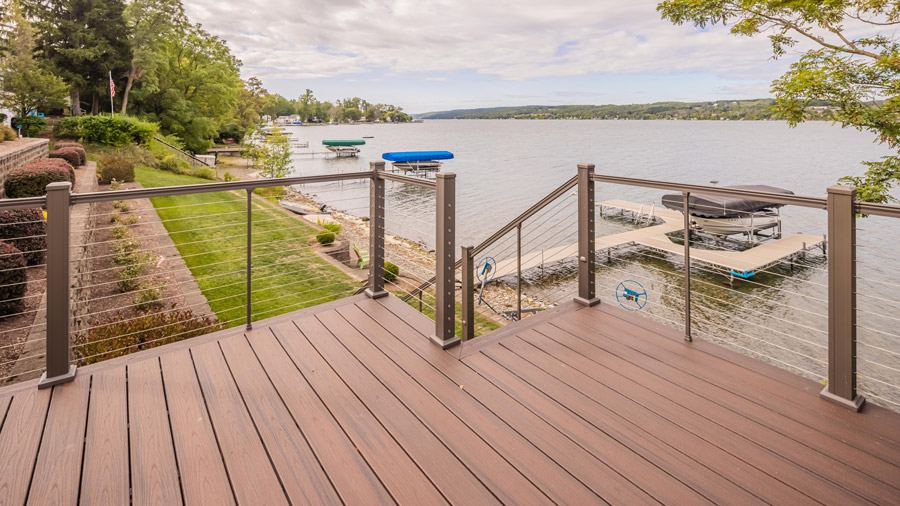
Table of Contents
- How To Make Your Deck Railing Stand Out
- Choose a Thick, Substantial Railing
- Choose White or Other Bright Colors
- Create Color Contrasts
- Add Craftsman Details
- Incorporate Unique Shapes
- How To Make Your Deck Railing Blend In
5 Ways To Make Your Deck Railing Stand Out

If you want to add pizzazz to your deck or yard, deck railing can serve as a standout accent piece that elevates your space.
Here are a few reasons why a stand-out deck railing might be right for you:
- Your home's exterior has a lot of neutral tones
- Your outdoor space needs a little more pop or sparkle
- You have a lake home and want your deck to stand out more to boats on the lake
- You want to distract the eye from suboptimal features in your yard or on your home (like a lawn that's still in progress, or older worn siding on your home)
- You like flashy, showy entertaining spaces that wow your guests
Here are five good ways to create a deck railing that stands out and carries the style and look of your outdoor space all by itself:
Choose a Thick, Substantial Railing
For decades, deck railings were almost always made from sturdy, heavy wood. Though technology has advanced to introduce new railing materials that last longer and require less maintenance (like wood-plastic composite, vinyl, aluminum and steel), the thick, substantial look of classic wood railing has remained a timeless and beloved style choice.
If you want your deck railing to stand out, look for a modern, low-maintenance material that keeps the enduring look of a thick wood railing.
Below are a few examples. Note the thick, sturdy posts that really create the timeless and eye-catching look. (All of the systems below use composite or vinyl post sleeves over the top of traditional wood posts or metal structural posts.)
The horizontal rails are also substantial, allowing for some unique shapes and details, and the large posts allow for big, decorative post caps and/or lights.
Substantial Railing Example: TimberTech Classic Composite Railing
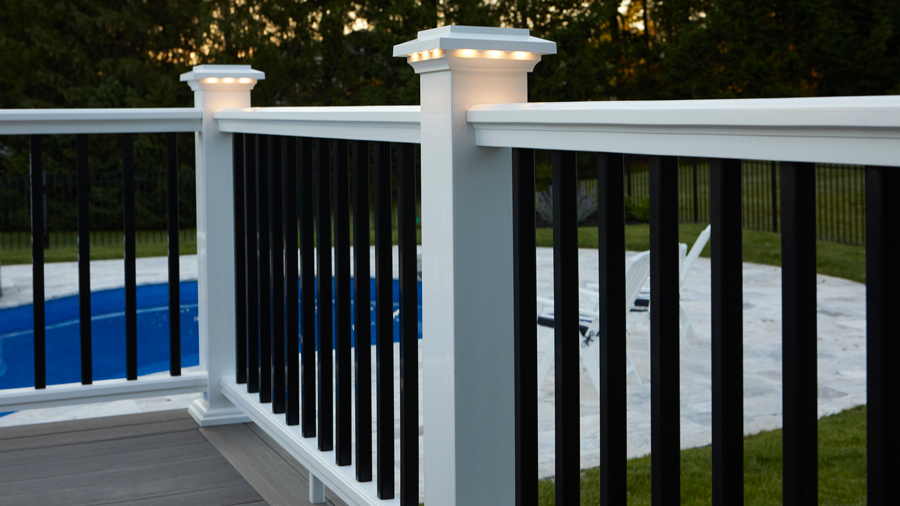
Substantial Railing Example: Durables Harrington Vinyl Railing
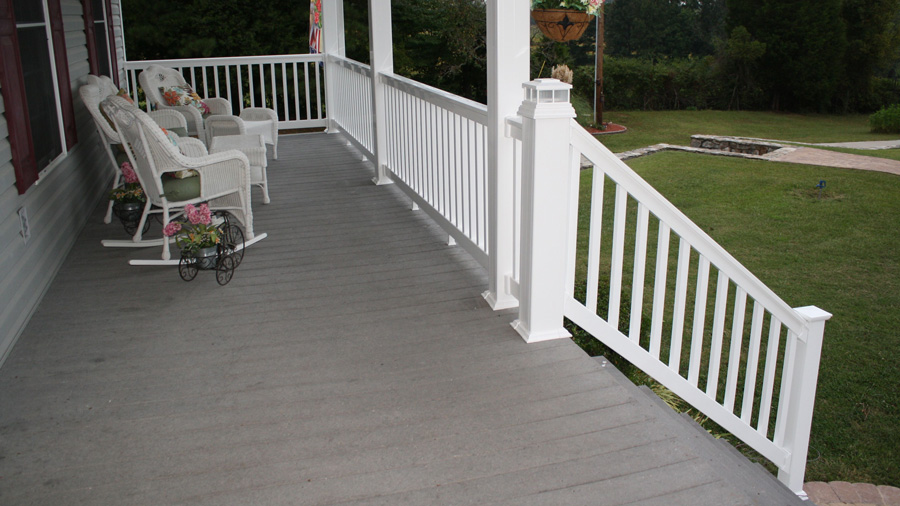
Substantial Railing Example: Trex Transcend Composite Railing
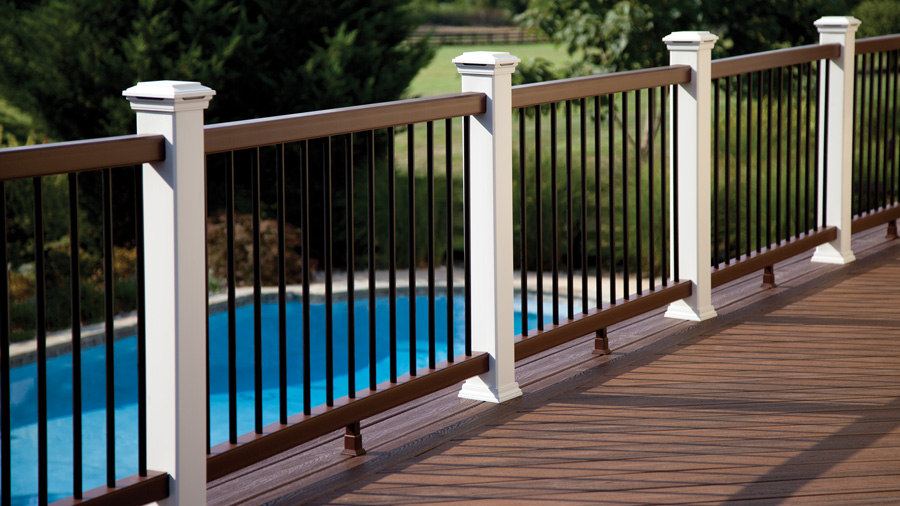
Choose White or Other Bright Colors
Where traditional wood railings needed to be painted or stained to really catch the eye with colors, modern railing materials come with a wide range of standout colors that last.
If you want your railing to stand out, choosing a bright white is just the ticket. Brilliant white railing just brightens up your deck space, especially if your home has dark, muted colors.
White Railing Example: TimberTech Classic Composite Railing
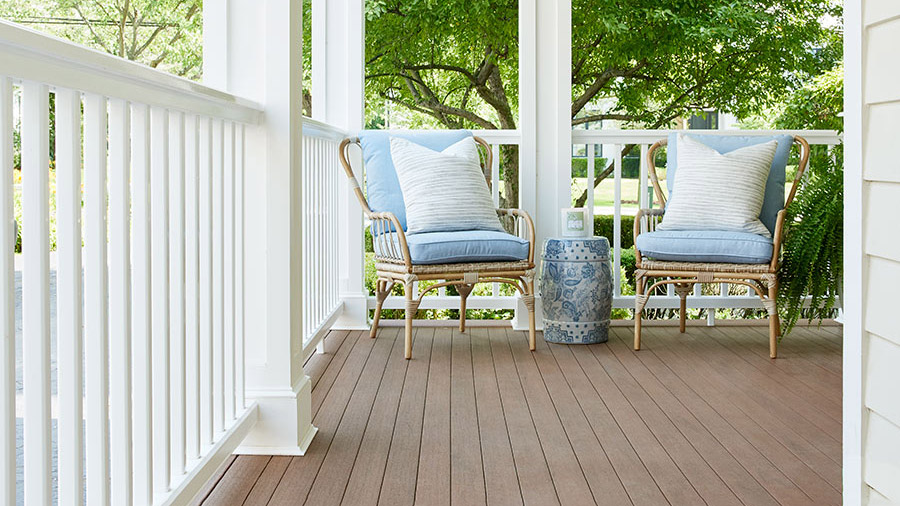
Create Color Contrasts
Another way you can use color to make your railing stand out is to create a color contrast within your deck railing. Pairing two or three colors together makes your railing pop in any setting, and can help your railing match some of the colors in your home's siding or trim.
The starkest contrast you can create is a black-and-white combo, which you can see in the Trex Select Composite system below. But you can get especially creative with a railing line like Trex Transcend, which features six different shades of black, white, gray and brown that you can mix and match at will.
One outside-the-box option is the metal Trex Signature Rod Rail system, where you can combine darker posts and rails as a contrasting picture frame around a bright platinum rod rail panel within.
Contrasting Railing Example: Trex Select Composite Railing
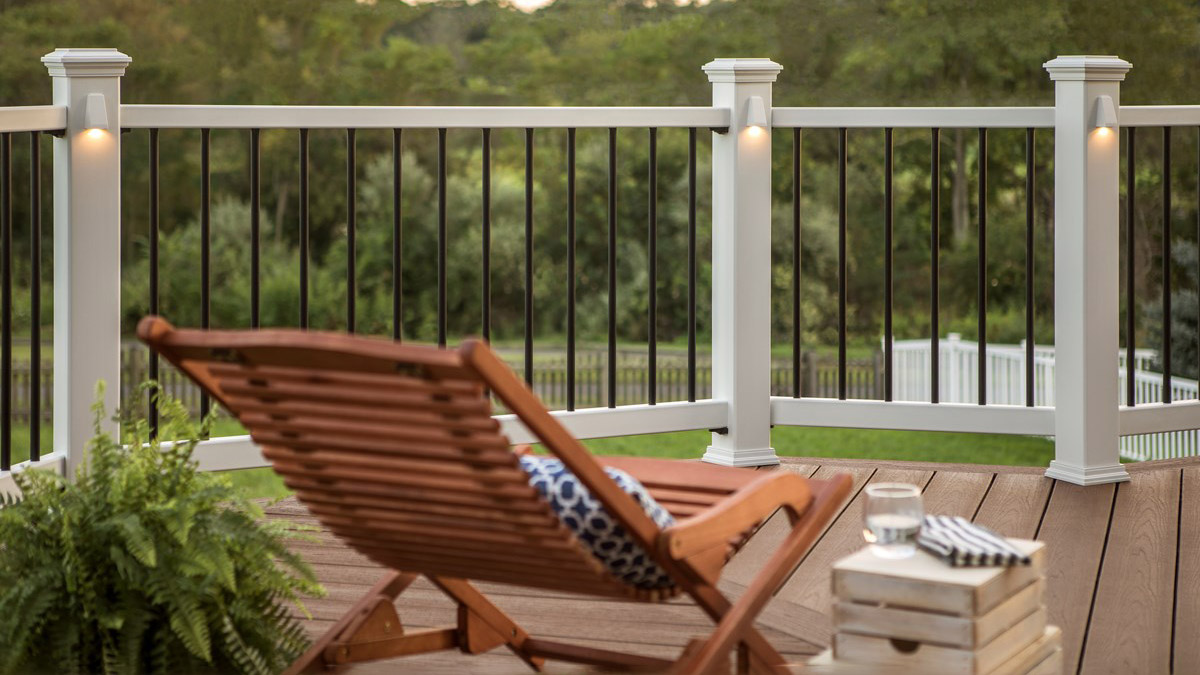
Contrasting Railing Example: Trex Transcend Composite Railing
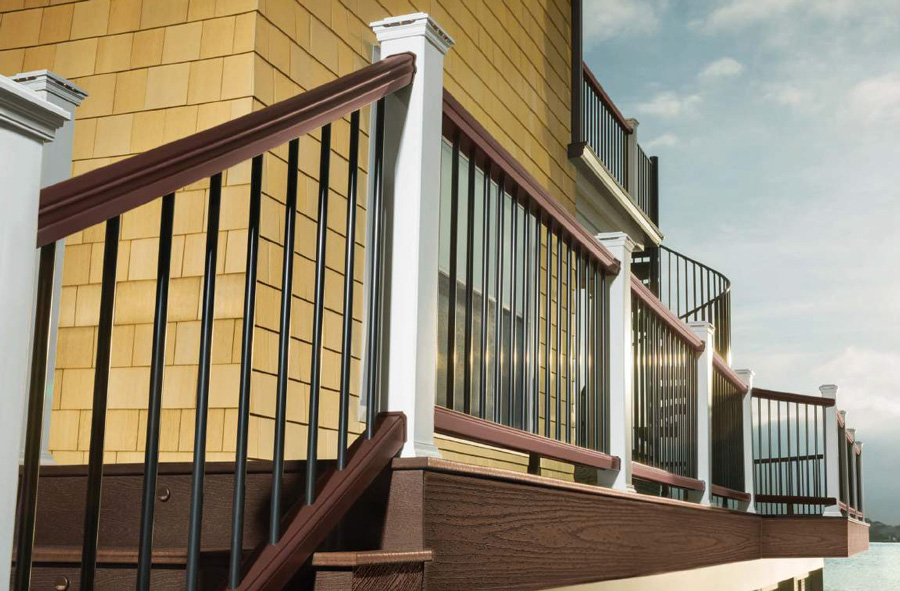
Contrasting Railing Example: Trex Signature Rod Rail Metal Railing
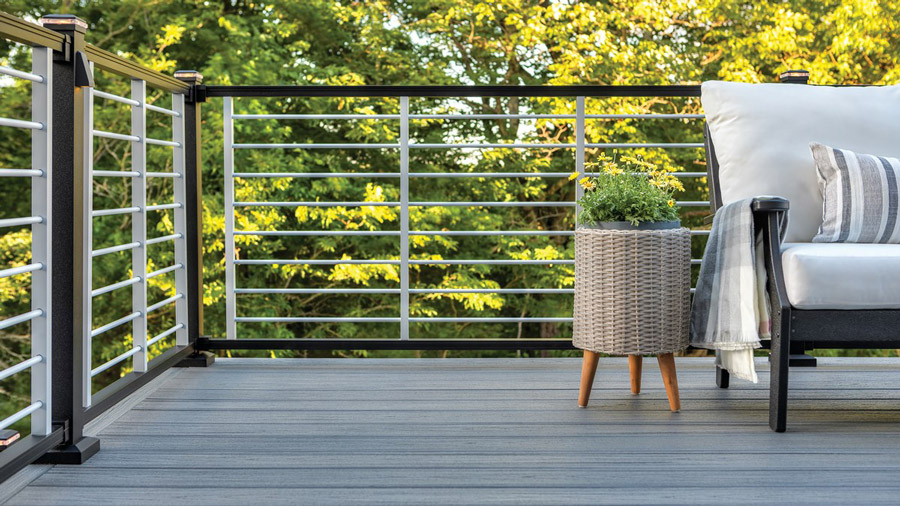
Add Craftsman Details
Unique detail can make your deck railing stand out, too. You may not see all the detailing from afar, but up close, some craftsman detail can add depth and polish to your deck.
Oftentimes, the best option is a crafted, unique top rail, like Key-Link's beautiful American Series top rail below. But you can also add details via your balusters, like the ornate turned balusters in the Durables Ashington Vinyl Railing system, which is a perfect fit for a grand Colonial-style porch.
Craftsman Railing Example: Key-Link American Series Metal Railing
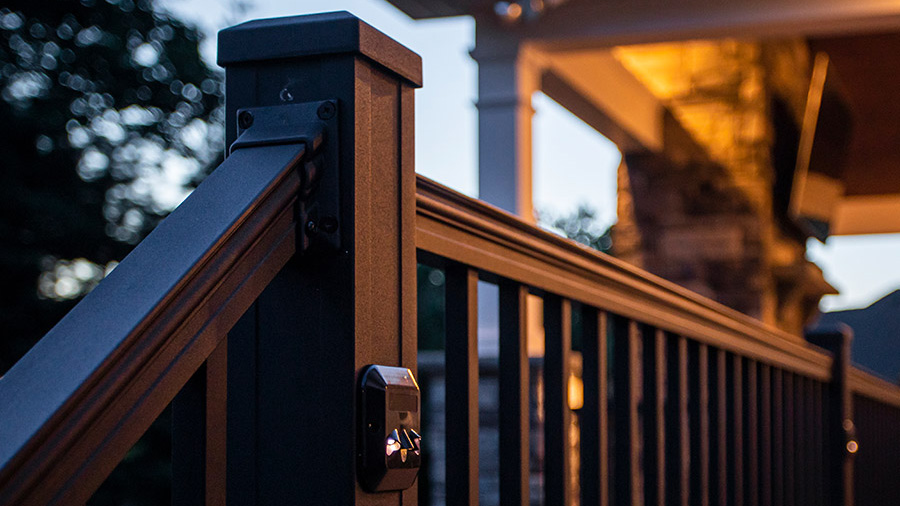
Craftsman Railing Example: Durables Ashington Vinyl Railing
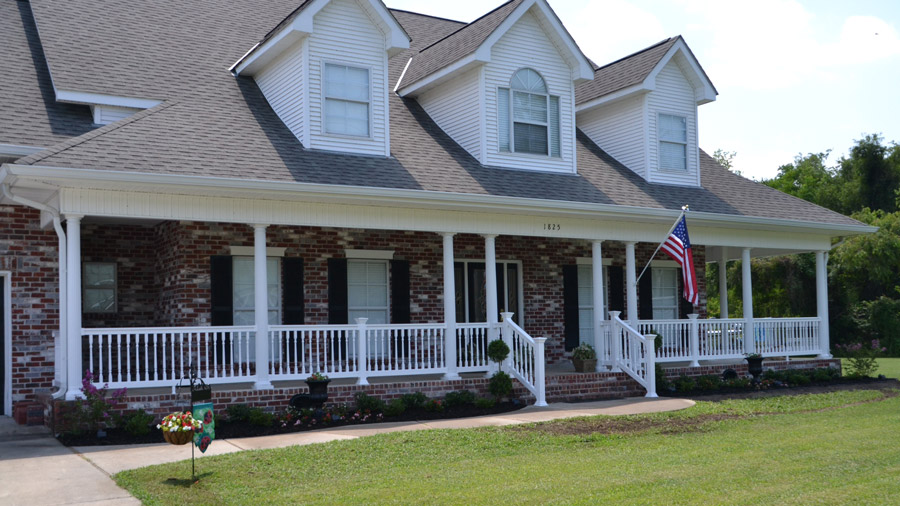
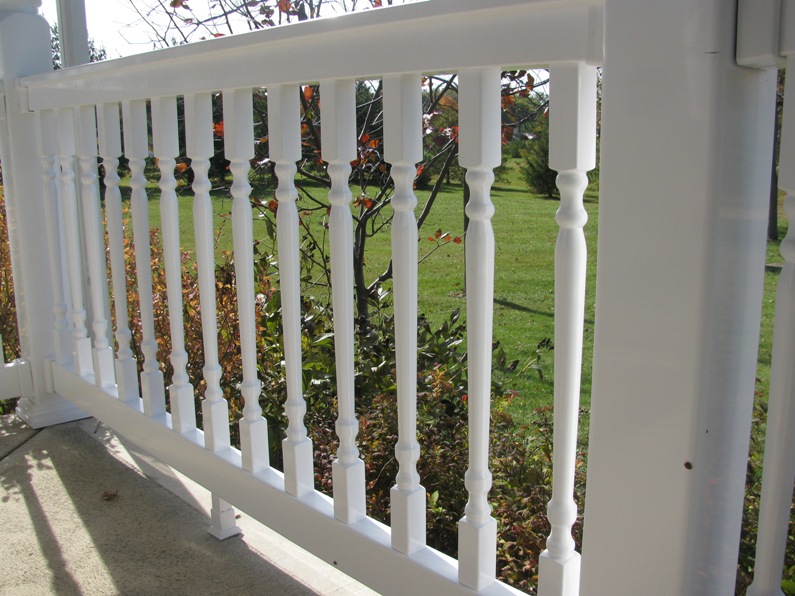
Incorporate Unique Shapes
On a similar note, you can make your deck railing stand out by incorporating unique shapes or geometric features.
By and large, everything about a deck tends to be square or rectangular. Decks are usually built with right-angle corners. Deck boards are long rectangles. Wood railing is made of rectangular posts and rails. So incorporating a rounded element, like the distinctive Century Aluminum Railing top rail below is a great way to add a unique shape to your space:
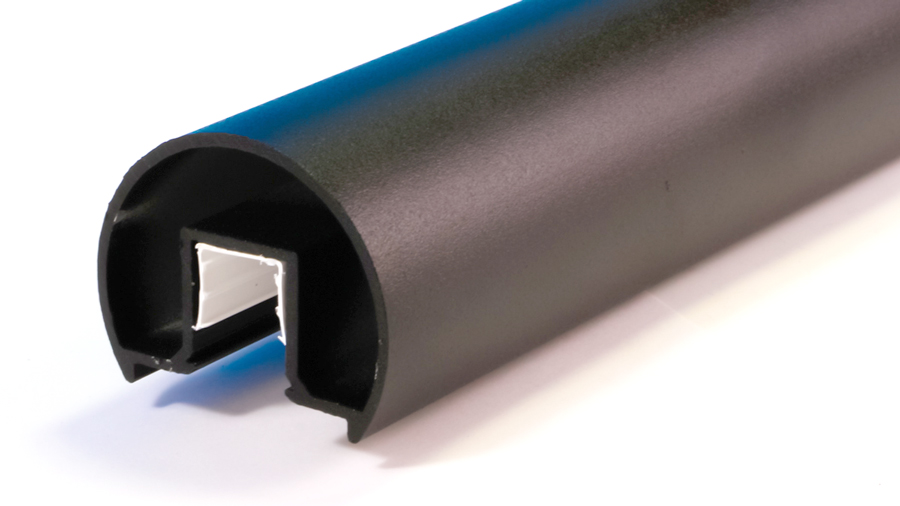
Uniquely Shaped Railing Example: Century Aluminum Railing
_900x900_landscape.jpg)
5 Ways To Make Your Deck Railing Blend In

If you love your deck's surroundings and view, then one of the worst things a deck railing can do is detract from what you love. Choosing a subtle deck railing can help support and enhance the view you love, rather than distracting from it.
Here are a few reasons why a subtle, blending-in deck railing might be right for you:
- You have an amazing deck view that you want to highlight
- You have other focal points on your deck, home, or in your yard that you don't want to overshadow
- You love a calming, nature-focused deck where you can relax and take in the Great Outdoors
- Your home has a minimalist style that would clash with showier deck railing
Here are five good ways to create a deck railing that blends in and lets your home, yard, or view be the star of the show:
Choose a Slim, Minimalist Railing
In contrast to the stocky, substantial railings we profiled above, you can choose a slimmer, more minimalist railing profile to get a railing that blends into the background.
Often, metal railings will tend to be slimmer and lower-profile than composite or vinyl railings, although there are exceptions. The strength of steel or aluminum allows metal deck railings to create safe, code-compliant boundaries with less material and less-obtrusive parts.
Minimalist Railing Example: Trex Signature Aluminum Railing
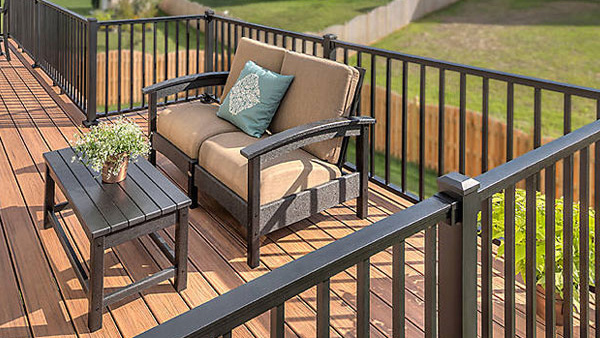
Minimalist Railing Example: Fortress FE26 Steel Railing
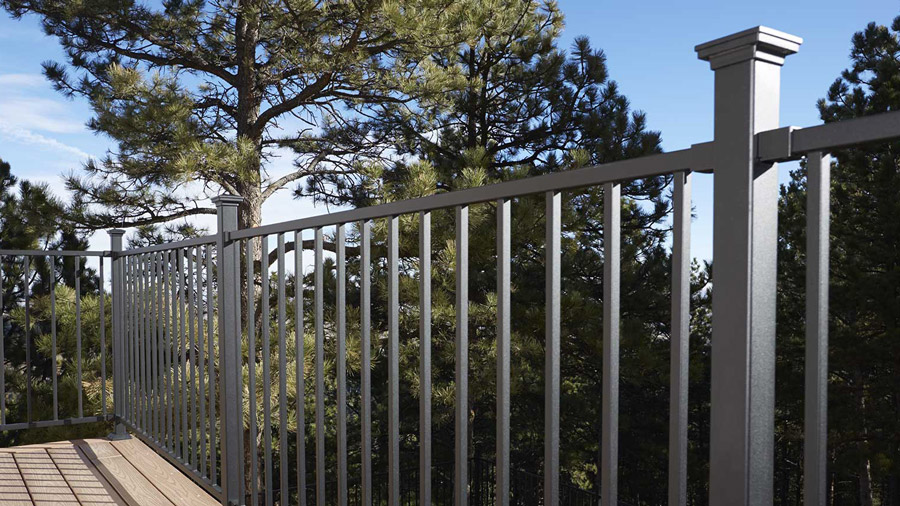
Choose Black or Bronze Railing
When it comes to color, black and bronze are classic choices that will typically disappear into the setting beyond.
Because black is so often used as an outline around more prominent colors, our eyes are trained to look past it, to treat it as a supporting color, but not a focal point. Using black railing takes advantage of this quirk of human eyesight to create a railing that blends into the background.
Bronze, meanwhile, is an earthy, organic color that commonly appears in nature. That makes it a perfect choice for a deck railing meant to blend into a view of nature or landscaping. You can see this in action below, with the bronze Key-Link railing that blends smoothly into the dirt, stone, and wood tones surrounding it.
Bronze Railing Example: Key-Link Horizontal Cable Railing
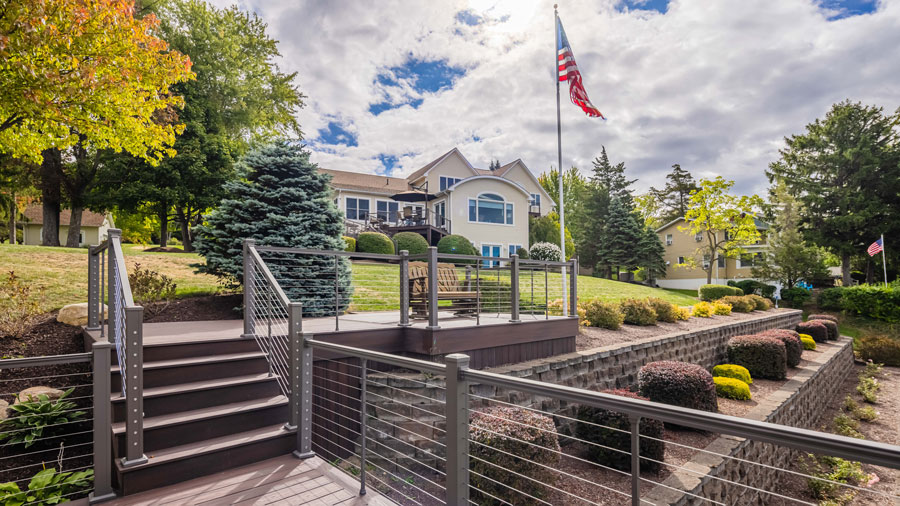
Black Railing Example: Fortress FE26 Steel Railing
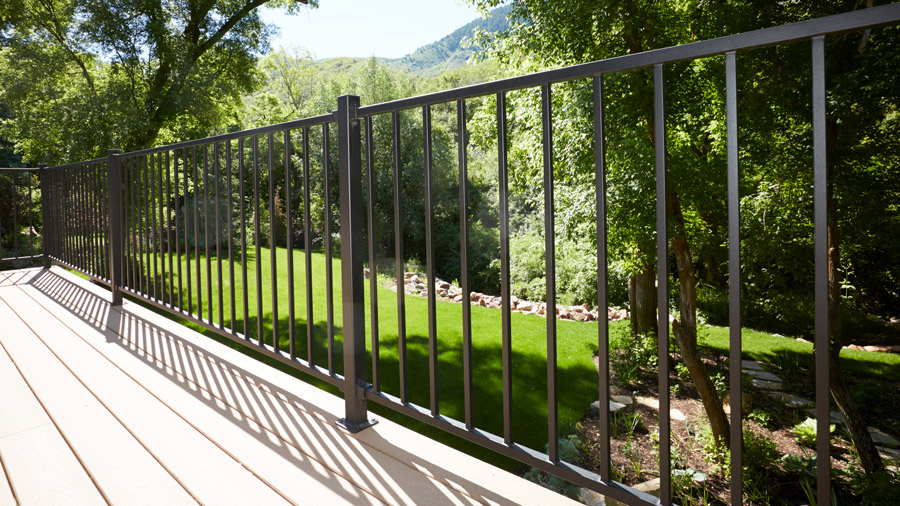
Stick to Thin Lines Wherever Possible
A subtle, background railing keeps its lines long and thin, allowing the eye to see past it without obstructing any views. The minimal top rails we highlighted above are one example of this principle. But it extends beyond minimalist style to the material and design of the railing.
One great way to include thin lines is to choose a cable railing. Thin strands of intertwined stainless steel railing, like the Key-Link cable railing shown below, create narrow lines that don't intrude on the view beyond.
Choosing a steel baluster railing is another good option. The superior strength of steel keeps rails, posts, and balusters thin, so you get a strong, sturdy, safe railing that doesn't cover up your view or overpower your other decorative elements. As you can see in the second photo below, steel railing panels can also be extra long, minimizing the number of thicker posts you need in each railing run.
Thin Line Railing Example: Key-Link Horizontal Cable Railing

Thin Line Railing Example: Fortress FE26 Steel Railing
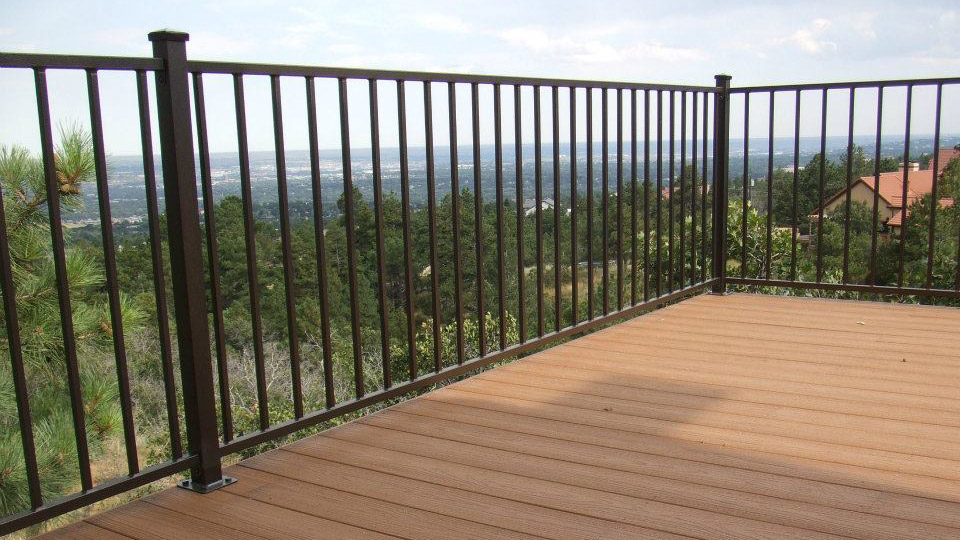
Focus on Matte, Textured Finishes
For maximum subtlety, look for a matte finish on your deck railing. This will keep the light from glinting or reflecting off of your railing, drawing eyes to it. A textured finish absorbs the light without reflecting it, providing a cool, polished look like the AFCO Pro cable rail kit shown below:
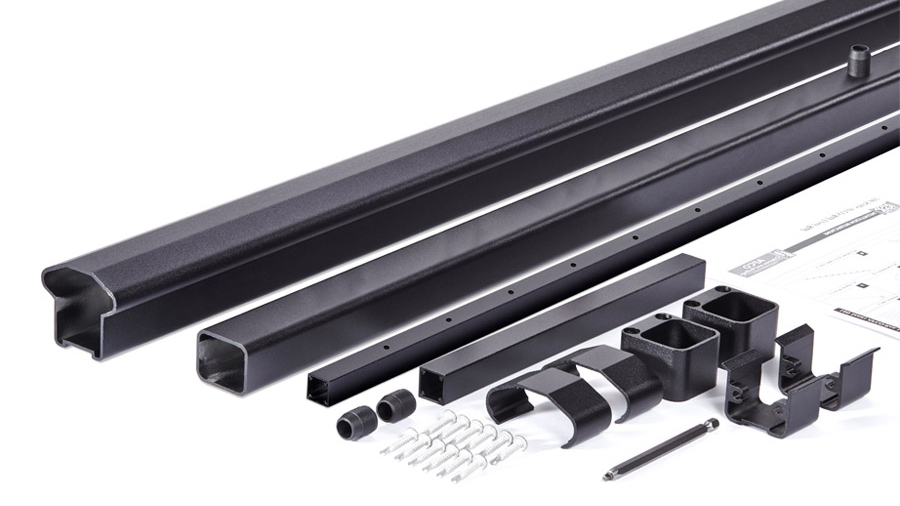
Most metal railings come in textured, powder-coated finishes like textured black (shown above), textured bronze (shown below), or even textured white.
Matte Texture Railing Example: AFCO Pro Aluminum Railing
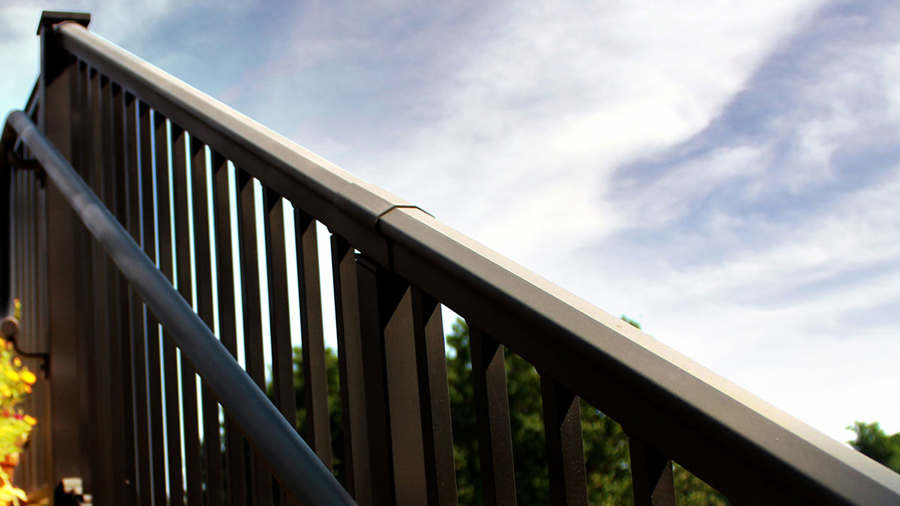
Match Your Home's Architectural Style
The final way to make your deck railing blend into your deck design is to match it to the architectural style of your home. On an older, more traditional home, a modern-looking deck railing may stick out like a sore thumb. In the same way, a classic deck railing might stand out in comparison to a sleek, modern house.
A traditional home will blend best with a classic top rail with some rounding and detail, like the traditional "breadloaf" style top rail of the AFCO Pro stair railing below.
If your home and decor are more modern, try something sleek and contemporary like the Key-Link American Series railing in the second photo below, which matches the more modern decor and furniture on that deck.
Traditional Home Railing Example: AFCO Pro Aluminum Railing
_landscape.jpg)
Modern Home Railing Example: Key-Link American Series Aluminum Railing
